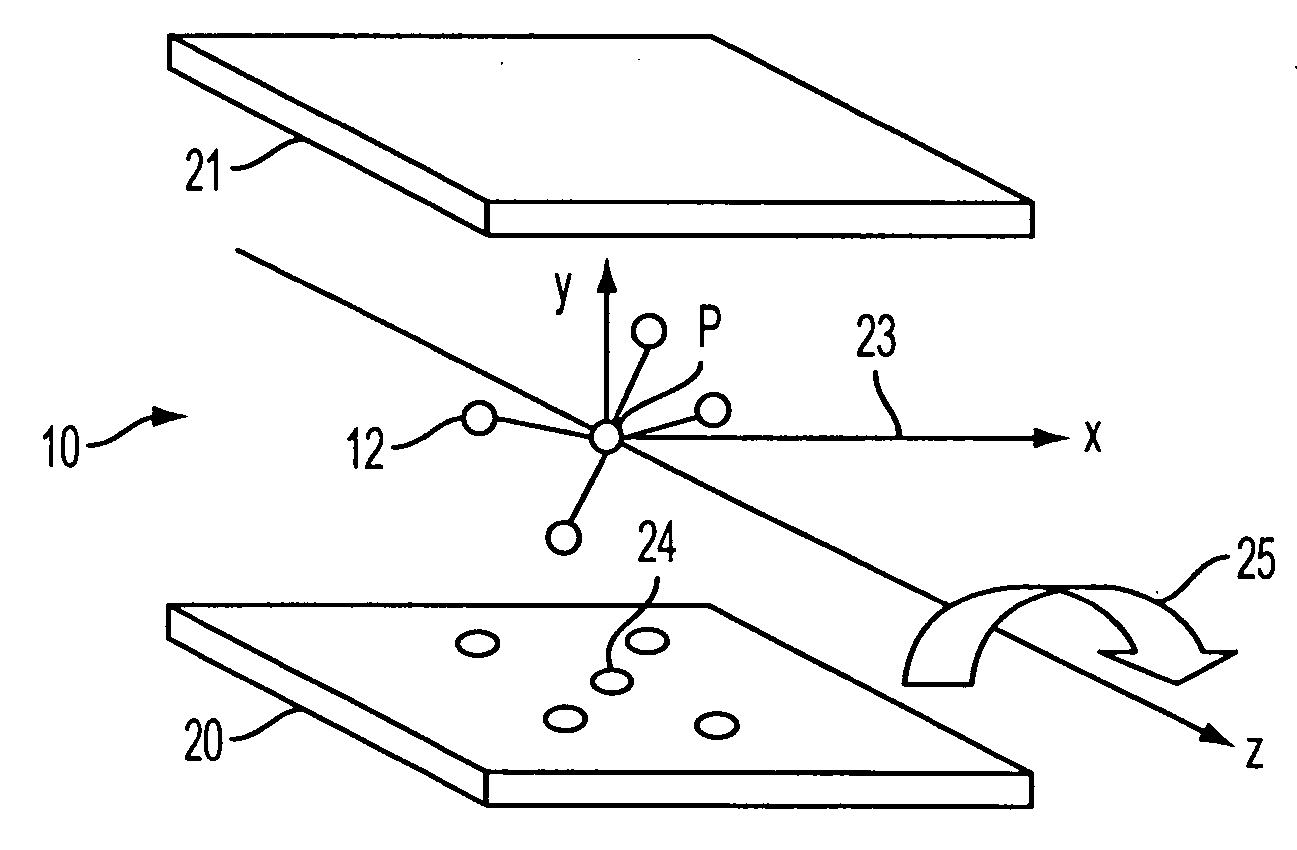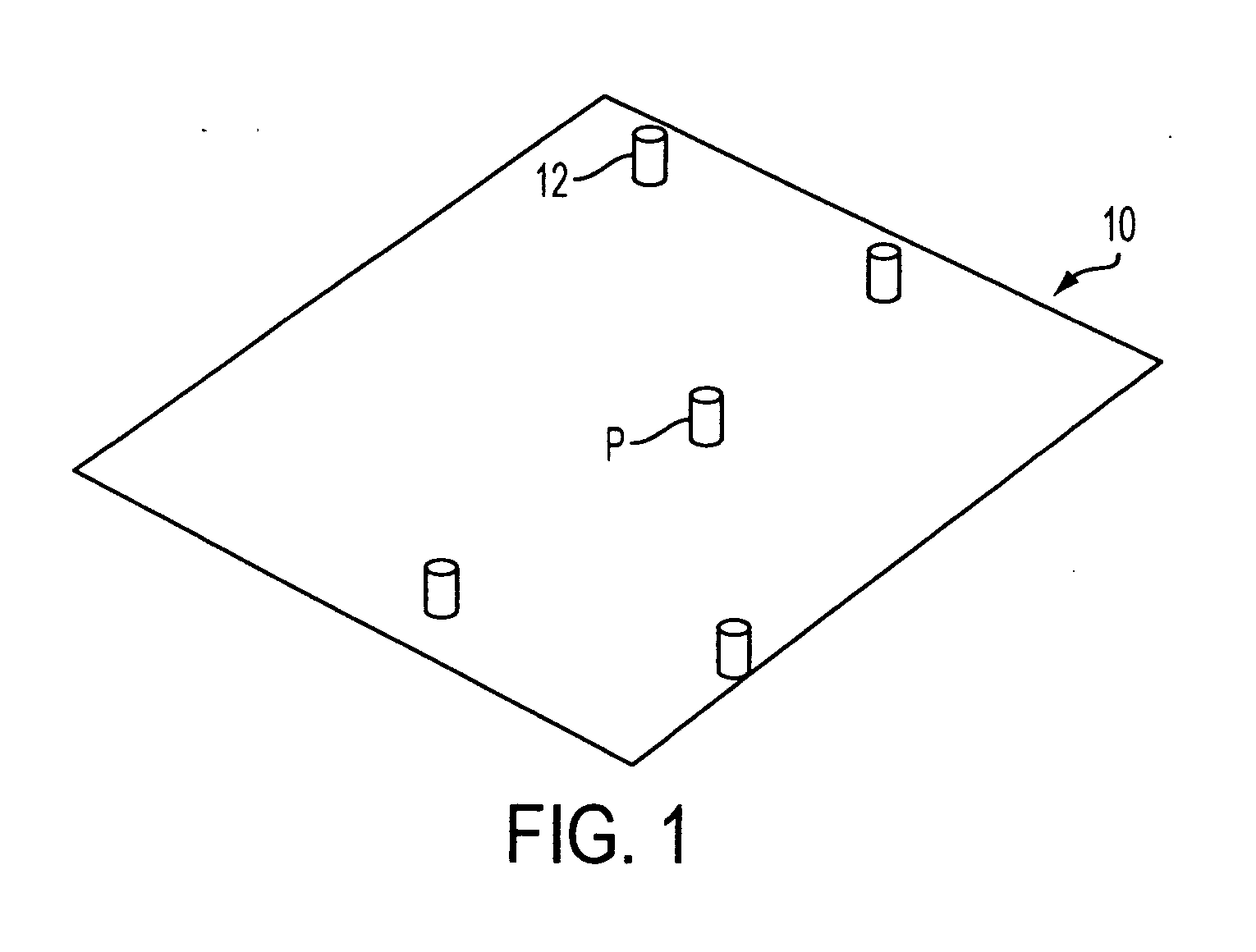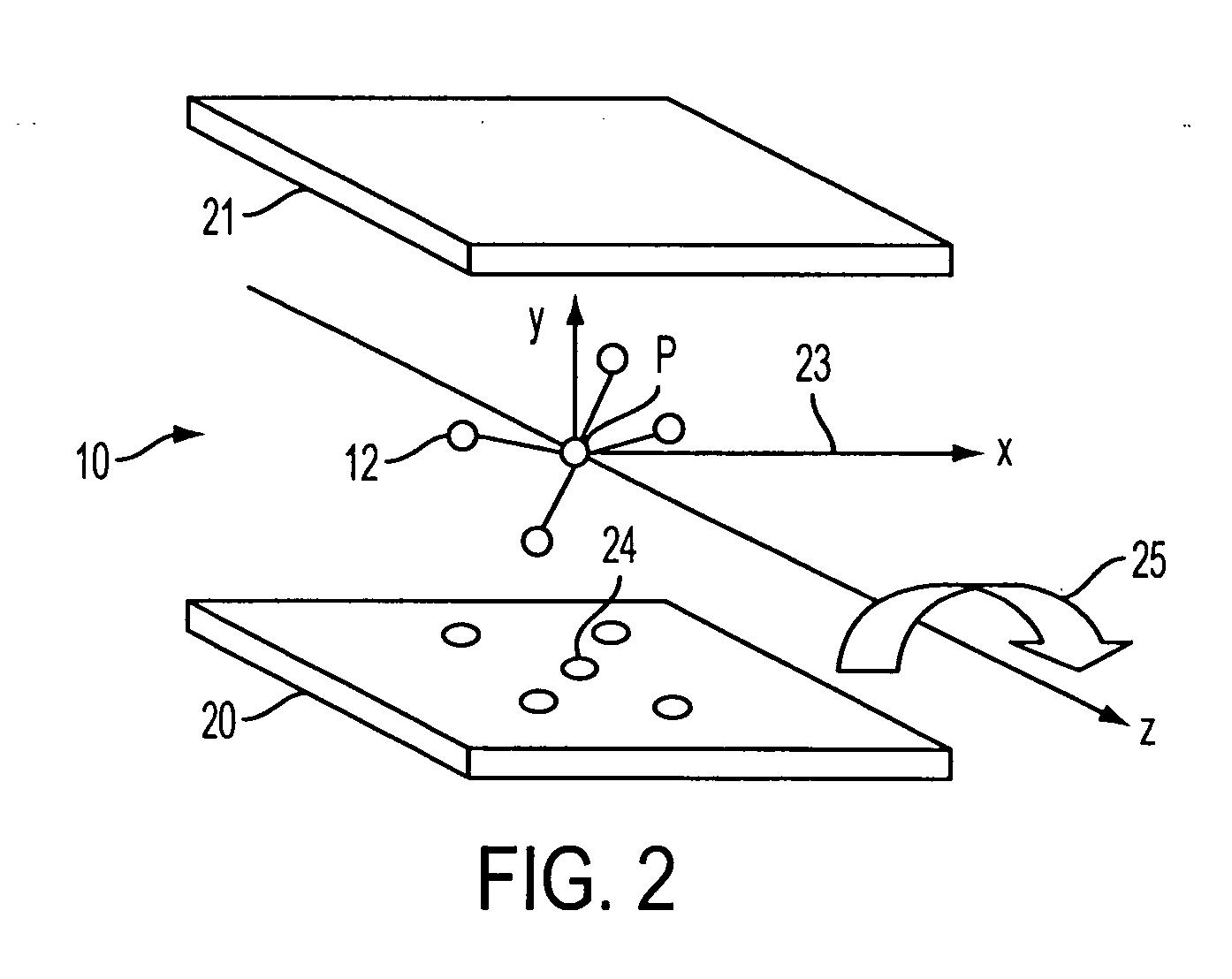Detector head position calibration and correction for SPECT imaging apparatus using virtual CT
a technology of spect imaging and calibration of detector head position, applied in the field of nuclear medical imaging, can solve problems such as high cost of procedure, head deflection and alignment, and potential image blurring and distortion
- Summary
- Abstract
- Description
- Claims
- Application Information
AI Technical Summary
Benefits of technology
Problems solved by technology
Method used
Image
Examples
Embodiment Construction
[0025]Referring to FIG. 1, a test phantom 10 is provided with a number of radioisotope point sources 12, with the center point source being denoted as point source P. In an exemplary embodiment, the test phantom comprises five point sources. Each point source comprises a capsule containing an appropriate amount of radioactive material, such as 99Tc or 57Co. The point source capsules 12 typically are mounted on a plate in a manner such that attenuation artifacts caused by interaction between the plate material and the point sources are minimized. As shown, the test phantom structure is such that a plurality of point source isotopes are located such that lines connecting any two pairs of said point source isotopes will be skewed with respect to each other.
[0026]The phantom with loaded point sources is then subjected to SPECT imaging over four projection view angles (ie., 0, 90, 180 and 270 degrees). First, as shown in FIG. 2, panel detectors 20 and 21 are placed in 0 and 180 degree ro...
PUM
 Login to View More
Login to View More Abstract
Description
Claims
Application Information
 Login to View More
Login to View More - R&D
- Intellectual Property
- Life Sciences
- Materials
- Tech Scout
- Unparalleled Data Quality
- Higher Quality Content
- 60% Fewer Hallucinations
Browse by: Latest US Patents, China's latest patents, Technical Efficacy Thesaurus, Application Domain, Technology Topic, Popular Technical Reports.
© 2025 PatSnap. All rights reserved.Legal|Privacy policy|Modern Slavery Act Transparency Statement|Sitemap|About US| Contact US: help@patsnap.com



